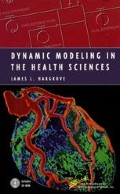Abstract
It is often said that “one is what one eats.” Think of this in relation to the three macronutrient categories of carbohydrate, protein, and fat. If one eats more carbohydrate, does this change one’s body composition in some fundamental way? More glycogen will be stored in muscle and other tissues, but there will be no other fundamental change in body composition. Similarly, if one eats more protein, only a small part of the excess amino acids is stored as labile protein in liver; the rest is quickly used for energy. Again, there is no fundamental change in one’s body composition, for the amino acids used to make more proteins are assembled using the genetically encoded templates of messenger RNA, and one’s diet does not change that code.
“l’ve always suspected that some of the cells in there are fluffing off much of the time, and I’d like to see a little more attention to real work.”
Access this chapter
Tax calculation will be finalised at checkout
Purchases are for personal use only
Preview
Unable to display preview. Download preview PDF.
References
Berdanier, C.D., B. Johnson, D.K. Hartle, and W. Crowell, 1992. “Iifespan is shortened in BHE/cdb rats fed a diet containing 9% menhaden oil and 1% corn oil.” J. Nutr. 122 (1992): 1309–1317.
Budowski, P. Alpha-linolenic acid and the metabolism of arachidonic acid. In: Galli, C. and A.P. Simopoulos. “Dietary ω3 and ω6 fatty acids.” Biological Effects and Nutritional Essentiality. New York: Plenum Press, (1989) 97–110.
Clarke, S.D., and D. Jump. “Polyunsaturated fatty acid regulation of hepatic gene transcription.” Lipids 31 (1996): S7–S11.
Conner, W.E., M. Neuringer, and D.S. Lin. “Dietary effects on brain fatty acid composition: the reversibility of n-3 fatty acid deficiency and turnover of docosahexaenoic acid in the brain, erythrocytes and plasma of rhesus monkeys.” J. Lipid Res. 31 (1990): 237–247.
Dyerberg, J., H.O. Bang, E. Stoffersen, S. Moncada, and J.R. Vane. “Eicospentaenoic acid and prevention of thrombosis and atherosclerosis?” Lancet 2 (1978): 117–119.
Havel, R.J. “The role of the liver in atherosclerosis.” Arteriosclerosis 5 (1985): 569–590.
Innis, S.M. “Sources of ω3 fatty acids in arctic diets and their effects on red cell and breast milk fatty acids in Canadian Inuit.” In: Galli, C., and A.P. Simopoulos. “Dietary ω3 and ω6 fatty acids.” Biological Effects and Nutritional Essentiality. New York: Plenum Press, 1989, 135–146.
Lands, W.E.M., A. Morris, and B. Iibelt. “Quantitative effects of dietary polyunsaturated fats on the composition of fatty acids in rat tissues.” Lipids 25 (1990): 505–516.
Lands, W.E.M., A. Morris, and B. Iibelt. “The function of essential fatty acids.” In: Nelson, G.J., ed. Health Effects of Dietary Fatty Acids. Champaign, Ill.: American Oil Chemists’ Society, 1991, 21–41.
Nanji, A.A., and S.W. French. “Relationship between pork consumption and cirrhosis.” Lancet 1 (1985): 681–683.
Nanji, A.A., and S.W. French. “Dietary linoleic acid is required for development of experimentally induced alcoholic liver injury.” Life Sciences 44 (1989): 223–227.
Nanji, A.A., C.L. Mendenhall, and S.W. French. “Beef fat prevents alcoholic liver disease in the rat.” Alcohol Clin. Exp. Res. 13 (1989): 15–19.
National Research Council. Nutrient requirements of laboratory animals: rats. Washington, D.C.: 1978, National Academy of Sciences, 12–18.
National Research Council. Diet and Health: Implications for Reducing Chronic Disease Risk. Report of the Committee on Diet and Health, Food and Nutrition Board. Washington, D.C.: National Academy Press, 1989.
Nelson, G.J. Dietary fatty acids and lipid metabolism, in Chow, D.-K., ed., Fatty Acids in Foods and Their Health Implications. New York: Marcel Dekker, 1992, 437–471.
Scow, R.O., F.J. Blanchette, and L.C. Smith. “Rate of lipoprotein lipase and capillary endothelium in the clearance of chylomicrons from blood: A model for lipid tranport by lateral diffusion in cell membranes.” In Polonovski, J., ed. Cholesterol Metabolism and Lipolytic Enzymes. New York: Masson, 1997, 143–164.
Shetty, H.U., Q.R. Smith, K. Washkizaki, S.I. Rapoport, and A.D. Purdon. “Identification of two molecular species of rat brain phophatidylcholine that rapidly incorporate and turn over archidonic acid in vivo.” J. Neurochem 67 (1996): 1702–1710.
Skipski, V.P. “Lipid composition of lipoproteins in normal and diseased states.” In Nelson, G.J., ed. Blood Lipids and Lipoproteins: Quantitation, Composition, and Metabolism. New York: Wiley Interscience, 1972, 471–584.
The Expert Panel. “Summary of the second report of the National Cholesterol Education Program (NCEP) on detection, evaluation, and treatment of high blood cholesterol in adults (Adult Treatment Panel II).“ JAMA 269 (1993): 3015-3023.
Trayhurn, P. “Dietary fatty acids and thermogenesis: Implications for energy balance.” In Chow, C.K., ed. Fatty Acids in Foods and Their Health Implications. New York, Marcel Dekker, 1992, 517–529.
Weber, P.C. Modification of the arachidonic acid cascade by long-chain ω3 fatty acids. In: Galli, C. and A.P. Simopoulos. “Dietary ω3 and ω6 fatty acids.” Biological Effects and Nutritional Essentiality. New York: Plenum Press, 1989, 201–211.
Author information
Authors and Affiliations
Rights and permissions
Copyright information
© 1998 Springer Science+Business Media New York
About this chapter
Cite this chapter
Hargrove, J.L. (1998). Dietary Polyunsaturated Fats and Your Cell Membranes. In: Dynamic Modeling in the Health Sciences. Modeling Dynamic Systems. Springer, New York, NY. https://doi.org/10.1007/978-1-4612-1644-5_11
Download citation
DOI: https://doi.org/10.1007/978-1-4612-1644-5_11
Publisher Name: Springer, New York, NY
Print ISBN: 978-0-387-94996-3
Online ISBN: 978-1-4612-1644-5
eBook Packages: Springer Book Archive

